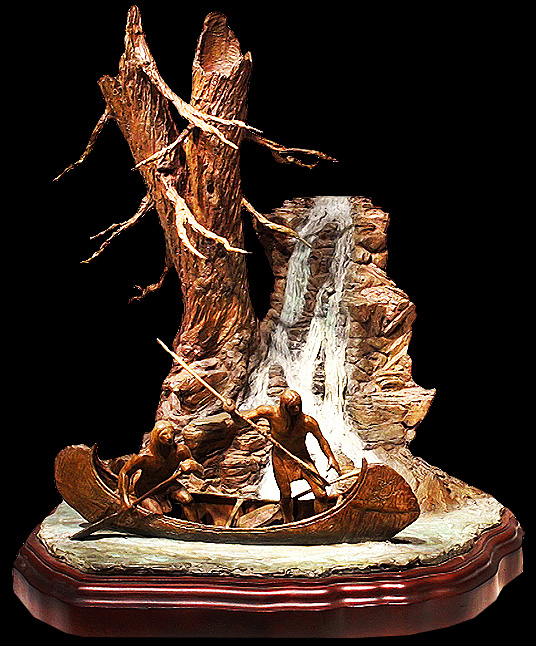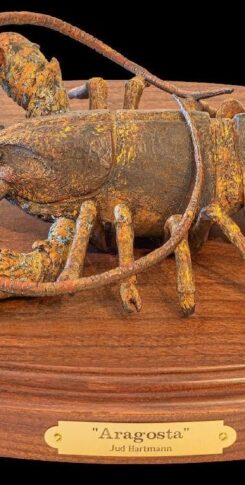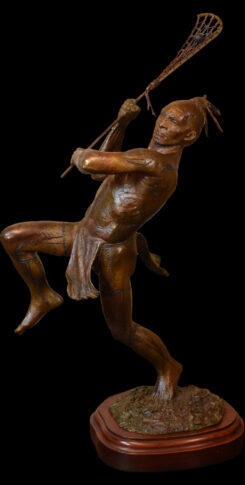
Bronze edition: 50 | Height: 20″
“The men employ their time solely in hunting and other exercise of the bow, except that they sometimes take some pains at fishing.”
Edward Winslow, c. 1630
“They went about their daily tasks with a great leisure for their days are all nothing but pastime. They are never in a hurry, quite different from us who can never do anything without hurry and worry because our desires tyrannize over us and banish all peace from us.”
Fr. Pierre Biard, c. 1618
“These tribes are so happy in their manner of life that they would be very loathe to exchange it for ours… the condition of our lower classes is extremely miserable in that they gain nothing without incredible pains and labour whereas the Indians have abundance of every necessity of life. And if they are not dressed in velvet and satin, happiness lies not in these, on the contrary desire of such things… are the plagues of our life…but among those tribes all are rich…for the world’s true riches is contentment.”
Marc Lescarbot, c. 1609
“The Indians happy, I think, in their simple state of nature and in their enjoyment of plenty, without the curse of labour. They have on several accounts reason to lament the arrival of the Europeans, by whose means they seem to have lost their felicity as well as their innocence.”
Robert Beverly, c. 1705
“Who would seek to live by labour, who can live by amusement” The sole occupation of an Indians’ life are hunting, fishing, warring abroad and lazying at home. Want is said to be the mother of industry but their wants are supplied at an easier rate.”
Lt. Henry Timberlake, c. 1765
Of all the native technologies adapted to life in the estern woodlands such as: splint baskets, lacrosse racquets, snowshoes and toboggans; perhaps none impressed Europeans more than the birchbark canoe. Restricted primarily to the more northerly forests where large birch trees were plentiful (further south elm bark or dugout canoes were used) a birchbark canoe that one man could carry overhead, could in turn carry a ton of weight. Flexible, lightweight and extremely buoyant, the frame was made of spruce and cedar covered in birchbark (the white facing inward) and seams stitched with spruce roots sealed with spruce gum. Each of the northern Algonkian tribes had its own distinctive profile in the curve and shaping of the prow and the stern but none more flamboyant than the Hudson’s Bay Company Cree canoe depicted here.
“And when I had more seriously considered of the bewty of the place with all her faire endowments I did not think that in all the known world that it could be paralleled… [ all of] which made the land to mee seeme paradice, for to mine eie ‘twas natures masterpiece: Her cheifest [treasure]: if this land be not rich then is the whole world poore.”
Thomas Morton, “New English Canaan”, 1637
“There is a pleasure in the pathless woods,
There is a rapture on the lonely shore
There is a society where none intrudes
By the deep sea and music in its roar
I love not man the less but nature more.”
Lord Byron (1788-1824)




